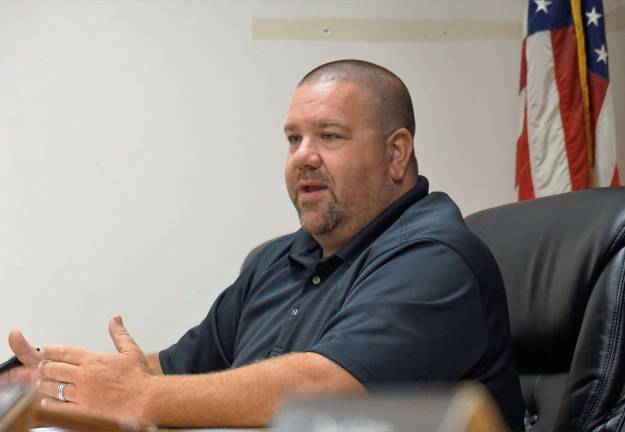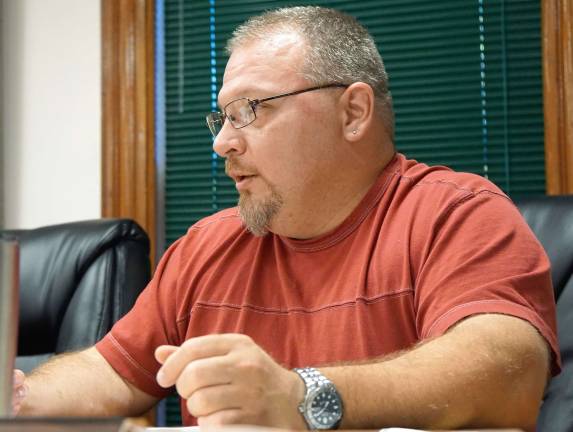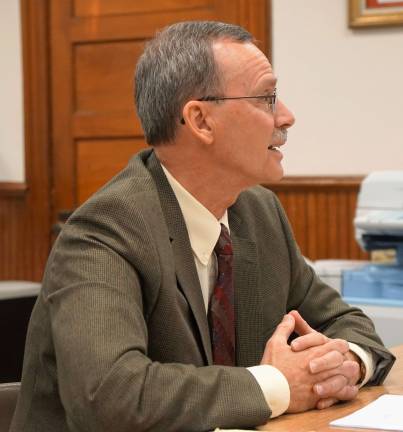Council: State backing Ogdensburg into corner



OGDENSBURG — Instead, Cherry, Weber & Associates Senior Vice President Peter W. Olieman answered council member questions regarding the newest required N.J. Department of Environmental Protection acknowledgment letter on Monday, Aug. 22.
President George Hutnick and Councilmen Robert McGuire and Peter Opilla expressed concerns about the state trying to “back them into a corner.” After discussion with Olieman, the three agreed to write an acknowledgment letter, or modify the state's, with the help of the attorney.
In the beginning of the meeting, Olieman explained the state letter acknowledges the DEP approved a reduced model storm, around two years ago, to four tenths of the normal design storm, based on calculations. Normally, the DEP requires a dam to withstand a design storm of 34 inches of rain in 24 hours. The letter also acknowledges Ogdensburg is responsible for any changes to Heater's Pond and dam.
Heater's Pond Dam is a Category I High Hazard structure because a dam failure could result in probable loss of life.
Olieman continued, the lower design storm allows improvements at a lesser cost than the full storm model.
He also explained if the council does not sign the letter, the state will not issue a permit to complete the dam work. Then, he said, the state can start fining. He added the permit is good for five years; and he hopes to submit the wetlands permit in about a month.
McGuire confirmed, “If the council does not sign a letter the state wrote — who nobody in this room trusts — then they will not give the permit to do the project that they want us to do in the first place?”
Olieman said that is what the DEP had told him.
Hutnick said something seems unethical, where the state forces Ogdensburg to do the work and to sign their letter for a dam which does not need to be fixed, always passed inspections, and never failed; otherwise the state would force fines. Hutnick said,
“So you're forced, you're forced, you're forced. Shut up and do what I tell you,” Hutnick said. “We're backed in a corner, and they're building a wall around us.”
Olieman said of all the subdivisions of DEP he has worked with, this group is the most reasonable, “believe it or not.” He added they really do not want to fine people, but want to get the dams upgraded, so they meet the standards.
McGuire said the people in the state could be in agreement now but in 15 years, the next group of employees from the state could interpret the acknowledgment letter differently.
Olieman explained dredging in the lake bed area would increase the volume of the pond, which could drain out if the dam breaches. He said if Ogdensburg dredged the swim area, it would not affect the dam, because the swimming area is already deeper than the dam outlet.
McGuire said he would like to add Olieman's explanation, “except in the swimming area,” to the letter.
Regarding formal dam inspections, Olieman said, they are already required every six years.
On top of that, Olieman explained, during routine dam inspections every two years, they check for: cracks, settlement, animal holes, leakage, condition of the dam, and update the emergency action plan.
With a formal dam inspection, Olieman said, they “look at the dam almost with a fresh eye,” including water shed changes and new standards.
After officials discussed concerns about the Sparta Mountain Forestry Project negatively affecting Heater's Pond, Olieman suggested adding a point in the letter addressing DEP management of the land and possible impacts on the dam.
Olieman said he will discuss dredging the swimming area with the DEP.